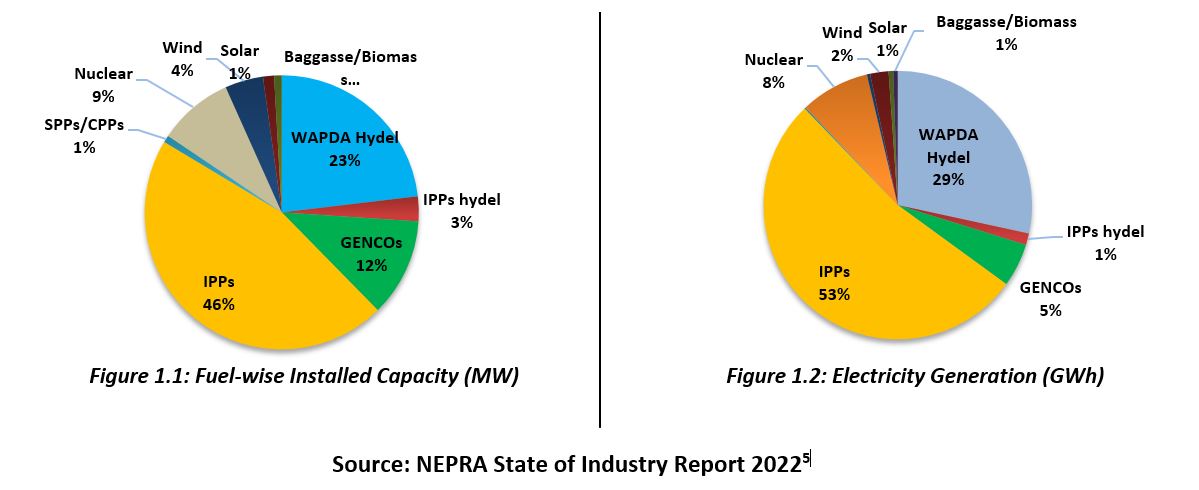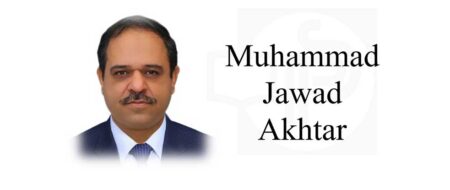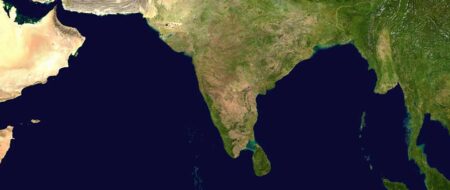Navigating Pakistan’s Power Sector Challenges: Tackling High Electricity Cost
The power sector in Pakistan is currently facing a host of significant challenges. These include issues like electricity theft, transmission and distribution losses, revenue recovery hurdles, the weight of circular debt, and a surge in electricity costs. Electricity prices have doubled within a short three-month period, reaching around Rs50 per kilowatt. All this is happening against a backdrop of economic disruption, with Pakistan dealing with an unprecedented inflation rate of 37.97% year-on-year.1
The reasons behind these surging electricity bills are multifaceted. To begin, in July 2023, the power regulator raised the national average tariff by approximately Rs5 per unit. This laid the foundation for a substantial increase in the base unit power tariff. Furthermore, the power tariff saw an additional increase of Rs3.552 per unit due to fluctuating exchange rates, rising fuel costs, and various taxes, including electricity duty, TV fees, General Sales Tax (GST), GST on Fuel Price Adjustment (FPA), and excise duty on FPA imposed on electricity bills. Collectively, these factors have contributed to the unsettling billing surge currently affecting the people of Pakistan.
The high electricity rates in Pakistan can be attributed to various factors. Firstly, the increasing costs of electricity production, driven by rising fuel prices and operational expenses, result in higher tariffs that consumers must bear. Outdated and deteriorating transmission and distribution infrastructure lead to high losses, further escalating costs passed on to consumers. Pakistan’s reliance on expensive imported fuels for power generation amplifies production expenses, which impact tariff rates. Additionally, reducing or removing government subsidies on electricity tariffs places consumers directly in the path of the higher costs associated with electricity production. These combined factors contribute to the challenges consumers face in Pakistan’s power sector.
Circular debt3 is a persistent challenge in the power sector, dating back to 2006 when the government failed to adjust tariffs to cover rising generation costs. The debt has grown due to technical inefficiencies, power theft, and low bill recovery from consumers, creating an imbalance between amounts owed to power producers and those receivable from distribution companies. Although tariff differential subsidies, which once bridged the cost gap, have been discontinued, the debt has ballooned to Rs2,631 billion as of July 2023.4
The involvement of political considerations in agreements with power producers has contributed to the debt increase, causing issues like load shedding and hindering economic growth. To tackle circular debt, the government raises power tariffs for all consumers, impacting affordability and requiring subsidies to maintain it. The main factor driving expensive electricity and rising costs is the heavy reliance on imported fossil fuels for power generation, which has economic and environmental consequences. A more balanced energy mix, integrating renewable sources, is vital to combat high electricity prices, enhance affordability, and meet climate change challenges.

Practical Recommendations for the Power Sector
A roadmap of effective recommendations emerges in the quest to tackle Pakistan’s persistent energy crisis. These strategies encompass policy reforms, transparent billing, tariff adjustments, renewable energy investment, modernizing infrastructure, and educating consumers. It’s a comprehensive approach designed to pave the way for a more sustainable power sector, ensuring a brighter future.
Deconstructing these recommendations into short-, medium- and long-term solutions lays the groundwork for a robust energy landscape in Pakistan.
Short-term Solutions
The following measures can be implemented as short-term solutions to address immediate challenges within the electricity sector. First, introducing gradual tariff adjustments is crucial, allowing for a phased approach to tariff modifications that cover the actual cost of efficient electricity production without causing sudden price shocks for consumers. Furthermore, reducing government charges, including taxes such as Electricity Duty, GST, Extra Tax, Further Tax, and Sales Tax on electricity bills, can alleviate the financial burden on consumers.6 Enforcing financial discipline and timely meter readings is essential to minimize revenue leakages, and improving billing transparency will enhance consumer understanding of their electricity bills. Additionally, reducing free electricity benefits for government employees, which currently extend to 15,971 Grade 17 to 21 employees and 173,200 Grade 1 to 16 employees,7 is a necessary short-term measure to address economic challenges. Robust energy efficiency programs and consumer education campaigns should be launched to promote immediate energy conservation, efficient appliance usage, and timely bill payment. Lastly, investing in energy efficiency measures and adopting energy-efficient technologies to reduce distribution losses can significantly contribute to overall revenue generation and cost management in the short term.
Medium-term Solutions8
Several strategic measures can be implemented as medium-term solutions to address the pressing challenges faced by distribution companies (DISCOs) in the energy sector. First, the deregulation of administrative and operational activities within DISCOs coupled with the promotion of public-private partnerships can be a transformative step. This approach divides the workload among DISCOs, fostering competition and expediting operational improvements, ultimately leading to reduced financial losses for these entities. Secondly, the subdivision of DISCOs into smaller units based on distribution network areas and population density is a medium-term strategy to enhance performance and efficiency. This restructuring directly targets issues like technical inefficiencies, low bill recoveries, and power theft. Additionally, medium-term solutions should prioritize infrastructure upgrading, including modernization of transmission and distribution systems. Implementing smart metering technology is crucial to reduce losses and inefficiencies, resulting in significant cost savings and enabling consumers to manage their energy consumption more effectively. Furthermore, renegotiating generation tariffs with Independent Power Producers (IPPs) is a viable medium-term option to alleviate the financial burden on the government and enhance the affordability of energy sources. Lastly, transitioning from take-or-pay contracts to dual contracts, initially involving capacity charges and subsequently shifting to take-and-pay contracts, can be a phased approach to ensure financial sustainability for DISCOs in the medium term.
Long-term Solutions: Transition Towards Renewable Energy9
As long-term solutions to address the persistent technical inefficiencies in distribution companies, particularly in rural areas, and the associated financial challenges, a multifaceted approach is crucial. First, promoting renewable energy-based distributed generation is essential. This approach involves integrating renewable energy sources into the distribution network and establishing community-scale distributed generation through enduring private partnerships. The result is reduced technical losses, enhanced bill recovery, and the facilitation of energy-only tariff settlements, ultimately mitigating long-term investment risks. To support the long-term integration of low-cost, clean energy into the grid, developing sustainable business models for distribution and generation, with a focus on Renewable Energy Supply Companies (RESCOs), is imperative. These models align with the Alternative and Renewable Energy Policy, 2019, and encourage investment in distributed generation by reducing capacity obligations and fostering business flexibility. Furthermore, incentives like changes in the tariff structure and the implementation of feed-in tariffs are vital to promote long-term distributed generation. Public-private partnerships offer lucrative opportunities, while the efficient use of infrastructure necessitates a deep understanding of energy demand, effective project management, and trend-based demand forecasting. Additionally, expanding utility-scale renewable energy projects through competitive bidding and hybrid power plants can significantly promote cost-effective renewable energy adoption in Pakistan. Despite renewables accounting for only 5.47% of the total capacity, their potential for cheaper generation is substantial. Such projects can reduce capacity payments for renewable plants, thus contributing to a sustainable long-term energy landscape.
Conclusion
The challenges Pakistan’s power sector faces, from circular debt to high cost and unreliable supply of electric power resulting in high tariffs and low coverage, demand strategic interventions. By addressing the root causes and implementing the recommended solutions, Pakistan can pave the way for a more sustainable, efficient, and consumer-friendly power sector. Balancing affordability for consumers with the financial viability of power companies is crucial for the nation’s energy landscape.
References
[1] Tahir Sherani, “Annual inflation in May reaches record level of 37.97pc,” Dawn, June 1, 2023, https://www.dawn.com/news/1757288.
[2] “Public anger against inflated electricity bills prompts PM to call emergency meeting,” Dawn, August 23, 2023, https://www.dawn.com/news/1772327.
[3] Muhammad Hamza Naeem and Lubna Riaz, “Pitfalls in Power Sector of Pakistan: Accumulation of Circular Debt – Causes, Consequences and Way Forward,” April 2023, 10.13140/RG.2.2.26751.18088.
[4] Ahmad Ahmadani, “Pakistan’s circular debt surges to Rs2.6tr in July-April FY23,” PT Profit, June 22, 2023, https://profit.pakistantoday.com.pk/2023/06/22/pakistans-circular-debt-surges-to-rs2-6tr-in-july-april-fy23/
[5] “State of Industry Report 2022,” NEPRA, 46-48, 2022, https://nepra.org.pk/publications/State%20of%20Industry%20Reports/State%20of%20Industry%20Report%202022.pdf.
[6] “Tax nightmare of Pakistan’s electricity bills: 9 taxes, duties,” Link News, August 29, 2023, https://mettisglobal.news/tax-nightmare-of-pakistans-electricity-bills-9-taxes-duties/.
[7] “Free electricity units for WAPDA employees; here’s latest update,” Pakistan Observer, August 31, 2023, https://pakobserver.net/free-electricity-units-for-wapda-employees-heres-latest-update/.
[8] Muhammad Hamza Naeem and Lubna Riaz, “Pitfalls in Power Sector of Pakistan: Accumulation of Circular Debt – Causes, Consequences and Way Forward,” April 2023, 10.13140/RG.2.2.26751.18088.
[9] Muhammad Hamza Naeem and Lubna Riaz, “Renewable Energy-Based Distributed Generation in Pakistan,” Policy Perspectives Vol. 19(1): 65-84. DOI: 10.13169/polipers.19.1.ra3.











